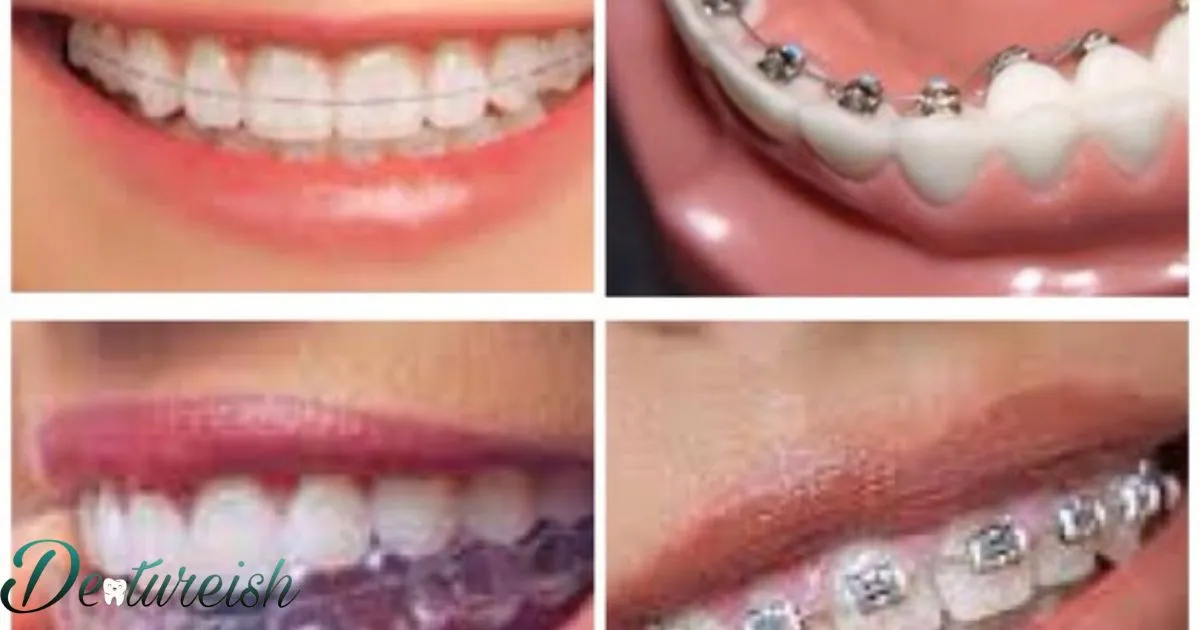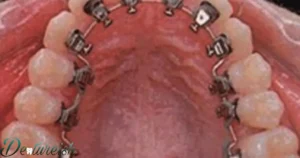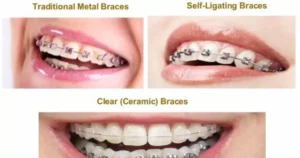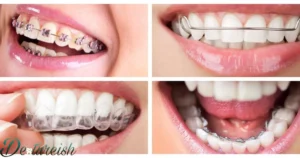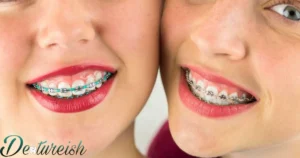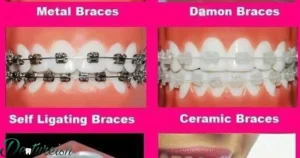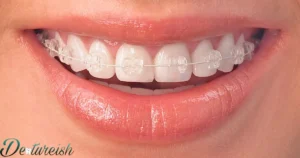Different types of braces brackets refer to various orthodontic devices used to align and straighten teeth. These brackets are commonly made of metal or ceramic and are attached to the teeth, serving as anchors for orthodontic wires.
Curious about the intricacies of Different Type Of Braces Brackets? Wondering how these tiny brackets can create stunning smiles? Dive into the world of orthodontics to uncover the secrets behind these transformative dental devices.
From traditional metal brackets to innovative clear aligners, the world of braces brackets offers a range of options to suit individual preferences and treatment needs. Each type of bracket comes with its unique features, advantages, and considerations, influencing the overall orthodontic experience.
Different Type Of Braces Brackets in Orthodontic Treatment
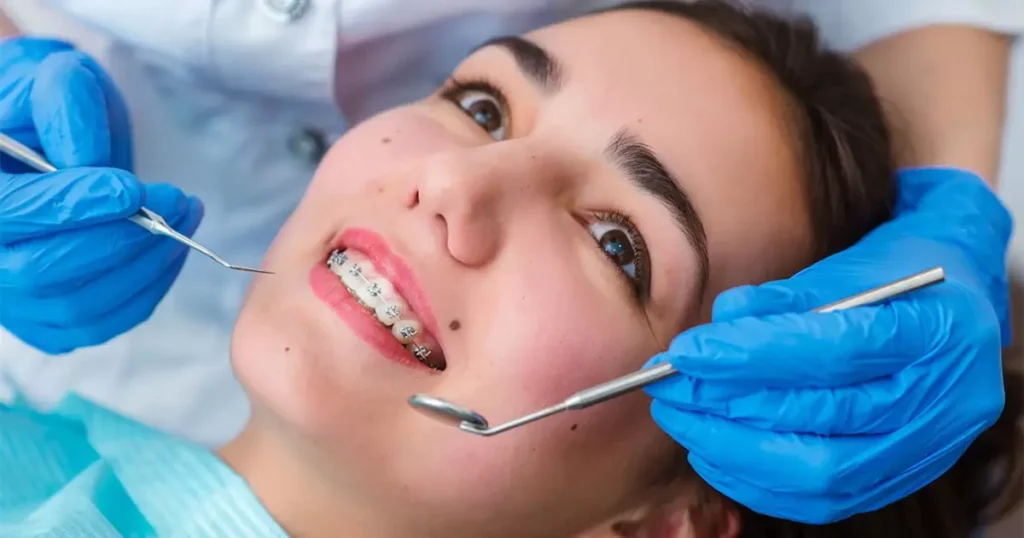
When it comes to orthodontic treatment, braces brackets play a crucial role in aligning teeth and creating beautiful smiles. Not all braces brackets are created equal.
Understanding the different types available can help you make an informed decision about your orthodontic care. In this article, we’ll explore various types of braces brackets and their unique features.
Metal Braces Brackets
Metal braces brackets are perhaps the most traditional option when it comes to orthodontic treatment. Made of high-grade stainless steel, these brackets are durable and effective in straightening teeth.
They work by applying pressure to the teeth, gradually shifting them into the desired position. Metal braces brackets are known for their reliability and affordability, making them a popular choice among patients of all ages.
Ceramic Braces Brackets
For those seeking a more discreet option, ceramic braces brackets are an excellent choice. These brackets are made of clear or tooth-colored ceramic material, blending in with the natural color of your teeth.
While they are less noticeable than metal brackets, ceramic braces brackets still offer the same level of effectiveness in straightening teeth. They are ideal for individuals who want a more subtle orthodontic treatment option.
Lingual Braces Brackets
Lingual braces brackets are unique in that they are placed on the backside of the teeth, making them virtually invisible when smiling. These brackets are custom-made to fit each patient’s teeth perfectly, providing a comfortable and discreet orthodontic solution.
While lingual braces brackets may take some time to get used to, they offer an excellent alternative for individuals who wish to undergo orthodontic treatment without the aesthetic concerns associated with traditional braces.
Self-Ligating Braces Brackets
Self-ligating braces brackets are designed to minimize friction and discomfort during orthodontic treatment. Unlike traditional braces that use elastic bands to hold the archwire in place, self-ligating brackets have built-in clips that secure the wire.
This design allows for smoother tooth movement and faster treatment times. Additionally, self-ligating braces brackets require fewer adjustments, reducing the number of visits to the orthodontist.
Clear Aligners
Clear aligners offer a convenient and virtually invisible alternative to traditional braces brackets. These custom-made aligners are made of clear plastic and are designed to gradually move your teeth into the desired position.
Clear aligners are removable, allowing you to eat and drink without restrictions and maintain proper oral hygiene. They are an excellent option for individuals who want to straighten their teeth discreetly and comfortably.
Evolution Of Braces

Over time, notations involving various braces became standardized in certain domains through widespread adoption and formalization.
How Did Bracing Structures Develop?
Early uses of parentheses, brackets and braces date back to ancient mathematics. But their integration across modern disciplines emerged more recently through calculus, programming languages and typesetting.
Origins And Early Use Cases
Initial motivations included grouping elements, hierarchies, abstract formsality and clarity. Notations enabled developing more powerful methods and expressing complex ideas effectively.
Standardization Over Time
As braces proliferated in multiple fields, consistent definitions emerged through professional organizations, common practices and digital formatting rules. Their roles became more rigidly defined.
Will New Braces Be Created?
With new domains and technologies, there may someday be need for novel bracketing symbols. But established forms are now deeply engrained in association structures across many knowledge domains.
Potential For Expanded Functionality
One can imagine uses like embedding behaviors into notations or denoting asynchronous/reactive flows. But adoption hurdles loom large against entrenched conventions.
Alternatives To Brace Notation
Other approaches could accomplish similar aims, like special characters, indentation, embedding types etc. But braces lend themselves well to human and machine parsing while maintaining visual clarity.
Frequently Asked Question
Are there different types of brackets for braces?
Yes, there are various types including metal, ceramic, and lingual braces.
What is the best bracket for braces?
The best bracket depends on factors like personal preference, orthodontic needs, and budget.
What are the 10 types of braces?
Types include traditional metal braces, ceramic braces, lingual braces, self-ligating braces, and clear aligners among others.
What type of braces are faster?
Generally, self-ligating braces and clear aligners are known for potentially faster treatment times.
What is the age limit for braces?
There isn’t a strict age limit, but typically, orthodontic treatment can be undertaken at any age, though it’s most common during adolescence.
Conclusion
The round parentheses or curved brackets () are often used in writing to add extra information or comments. Square brackets [] are commonly used in writing to add clarification or citations. Curly braces {} are typically used by programmers in many coding and scripting languages to group code blocks and statements together.
In conclusion, braces and brackets come in different shapes but all serve an important purpose of organization. Being familiar with the most common types such as parentheses, square brackets, and curly braces can help anyone from students and writers to programmers effectively structure and clarify their work.
